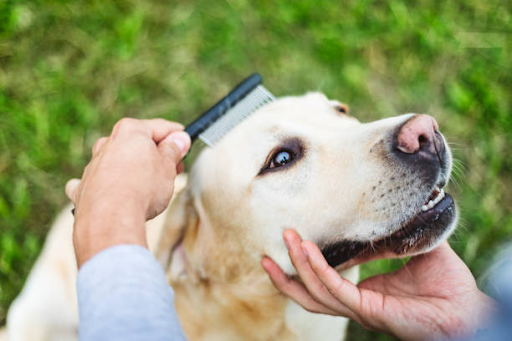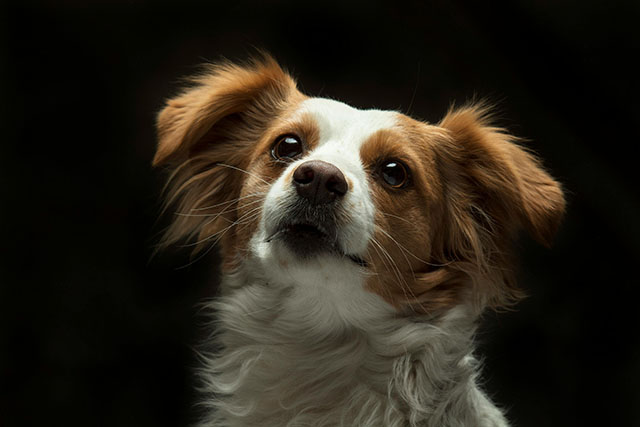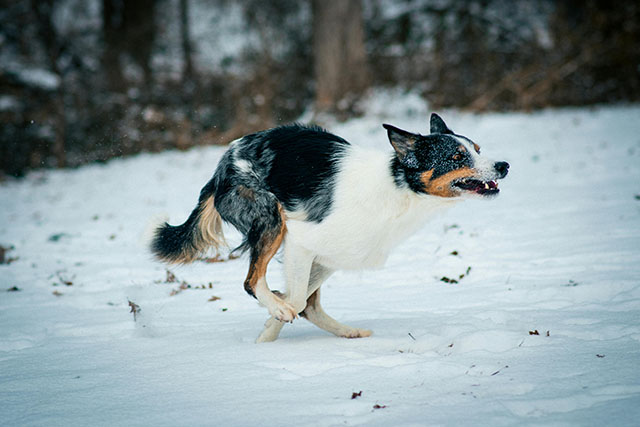Losing fur. Shedding clumps of hair in the wrong places at the wrong times. These are two things that no dog owner wants to experience; however, it’s an all too common issue for our canine pals and one that can be difficult to handle if you don’t know what steps to take next. Whether your pup is dealing with seasonal changes or skin allergies, protecting their coat should always be a priority to keep them healthy and happy.
Let’s talk about how regular brushing can help combat those pesky strands of fur from flying around your home and will offer tips on tackling dog hair loss, depending on each situation. Keep reading for some insightful advice!
Does Brushing Your Dogs Help Them Shed Less?
Let’s start by addressing the most pressing question: Does brushing your dog actually help them shed less? The short answer is a resounding yes! Regular brushing is one of dogs’ most effective ways to reduce shedding.
When you brush your dog, you remove loose and dead hair from their coat and distribute natural oils evenly. These oils nourish the skin and help maintain a healthy coat. By removing loose hair and promoting healthier skin, you’ll significantly reduce the amount of hair your dog sheds around your home.
Moreover, brushing can also prevent matting and tangling, which can lead to excessive shedding as well. So, in a nutshell, brushing your dog is like a win-win situation for both you and your furry friend!
What is a Shedding Brush?
Now that we’ve established the importance of brushing, let’s talk about shedding brushes. A shedding brush is a specialized grooming tool designed to remove loose hair effectively. Unlike regular brushes, shedding brushes are designed with unique features to target the specific needs of dogs that shed excessively.
Shedding brushes typically have fine, closely spaced teeth that can reach deep into your dog’s coat to remove loose hair without causing discomfort. They come in various shapes and sizes, but most commonly, you’ll find de-shedding tools, slicker brushes, and rubber curry brushes.
Three Popular Shedding Brushes for Dogs:
1. FURminator Undercoat Deshedding Tool for Dogs

- Designed for large dogs with short hair (weighing over 50 pounds).
- Features a stainless steel de-shedding edge to safely remove loose hair and undercoat.
- Includes a FUREJECTOR button for easy hair release.
- Ergonomic handle for comfortable grooming.
- Great for reducing shedding and maintaining your dog’s coat.
2. Professional Slicker Brush for Dogs and Cats by GoPets

- Suitable for dogs and cats of all sizes and hair types.
- Gently removes loose hair, tangles, knots, dander, and trapped dirt.
- High bristle density of fine bent wires for effective grooming without scratching your pet’s skin.
- Captures loose hair while brushing, making it easy to clean.
- Comfort silicone gel grip prevents hand and wrist strain.
3. The Pet Portal Self-Cleaning Dog Brush for Shedding

- The self-cleaning feature makes it easy to remove trapped hair with a button.
- Ideal for medium to large pets.
- Versatile brush suitable for both long and short-haired pets.
- Features soft, angled bristles for gentle and painless de-shedding.
- Time-saving and efficient grooming tool.
Each of these brushes has its unique features and advantages. The choice ultimately depends on your dog’s size, coat type, and personal grooming preferences. Whether you prefer the convenience of self-cleaning, the specialized de-shedding edge of the FURminator, or the versatility of the Pet Portal brush, all three options can help you manage your dog’s shedding effectively.
What Kind of Brush Helps Dog Shedding?
With so many grooming tools available, choosing the right brush for your dog’s specific needs is important. Here’s a breakdown of the types of brushes that can help with dog shedding:
- Deshedding Tool: Deshedding tools, like the FURminator, are designed specifically for reducing shedding. They have a fine-toothed edge that effectively removes loose hair from the undercoat. These tools are ideal for double-coated breeds like Huskies, German Shepherds, and Golden Retrievers.
- Slicker Brush: Slicker brushes have fine wire bristles that are great for removing tangles and mats, which can contribute to shedding. They’re suitable for dogs with medium to long hair and can help maintain a well-groomed appearance.
- Rubber Curry Brush: Rubber curry brushes have soft rubber bristles that remove loose hair and massage your dog’s skin. This type of brush is gentle and works well for short-haired breeds.
- Bristle Brush: Bristle brushes suit dogs with short, smooth coats. They help distribute natural oils and remove surface debris, reducing overall shedding.
The best brush for your dog depends on their breed, coat type, and individual preferences. It’s a good idea to consult with your veterinarian or a professional groomer for personalized recommendations.
Does Brushing Your Dog Help Hair Growth?
While brushing your dog won’t directly stimulate hair growth, it does contribute to a healthier coat, which can indirectly support hair growth. Here’s how it works:
As mentioned earlier, brushing distributes natural oils your dog’s skin produces throughout their coat. These oils keep the skin moisturized and nourish the hair follicles. When the hair follicles are in good shape and well-nourished, it creates a conducive environment for healthy hair growth.
Furthermore, regular brushing helps remove dirt, debris, and dead skin cells that can clog hair follicles, potentially hindering hair growth. Keeping the skin clean and the follicles unclogged gives your dog’s coat the best chance to grow strong and healthy. Did you know that several dog breeds are non-shedding? It’s true! Discover these incredible breeds by watching this fascinating video.
How Do I Stop My Dog from Shedding When I Brush?
Now that you understand the benefits of brushing and have the right tools at your disposal let’s discuss how to effectively tackle shedding when you brush your dog:
- Consistency is Key: Establish a regular grooming routine. Depending on your dog’s breed and coat type, you may need to brush them daily, weekly, or somewhere in between. Consistency helps prevent excessive shedding.
- Start Slowly: If your dog isn’t used to grooming, introduce brushing gradually. Use treats and positive reinforcement to make the experience enjoyable.
- Be Gentle: Always be gentle when brushing. Avoid applying too much pressure or brushing too vigorously, as this can irritate your dog’s skin.
- Brush in the Right Direction: Brush in the direction of hair growth to avoid pulling and discomfort. For double-coated breeds, start with an undercoat rake or de-shedding tool to remove loose undercoat hair.
- Remove Loose Hair: As you brush, remove the loose hair from the brush regularly. This will keep the brush effective and prevent the hair from resettling on your dog.
- Bathe When Necessary: Regular baths can help reduce shedding by removing loose hair and keeping the skin clean. Use a dog-friendly shampoo and conditioner.
- Consult a Professional: If you’re unsure about the best brushing techniques or your dog’s specific grooming needs, don’t hesitate to consult a professional or veterinarian for guidance.
A Fur-Tastic Solution for a Shed-Free Home
In conclusion, brushing your dog is a powerful tool for managing shedding and promoting a healthy coat. It not only reduces the amount of hair your dog leaves behind but also strengthens the bond between you and your furry companion.
Remember to choose the right brush for your dog’s coat type, establish a regular grooming routine, and always be gentle and patient. With a little effort, you can keep your home cleaner and your dog looking and feeling their best. Happy grooming!
Jessica is a veterinary medicine student who is passionate about animals. Living with her cherished dog, Milo, deepens her understanding of the human-animal connection, enhancing her empathy as a future veterinarian.
Jessica’s concise articles reflect her dedication to improving the lives of animals and those who care for them, making her an inspiring figure in the pet care field.







